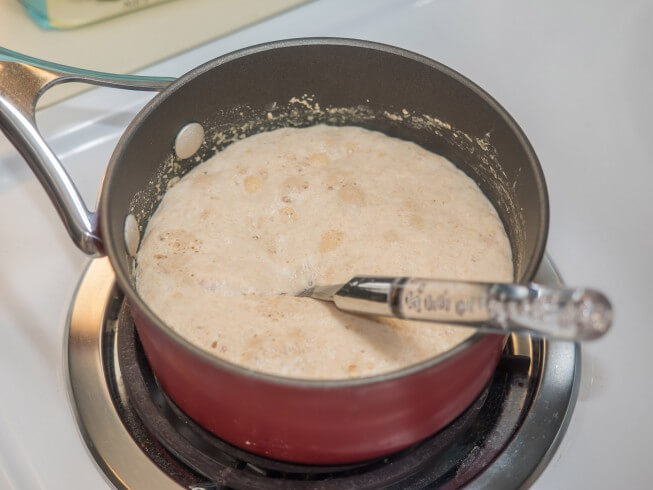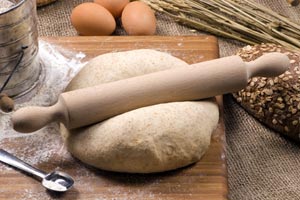If you're a fan of the menu at this American chain of restaurants which serves a variety of foods such as burgers, steaks, pasta, and seafood then you'll love this collection of copycat recipes.

Yogurt sourdough starter is a live culture made by fermenting milk, yogurt, and flour. This fermentation process gives sourdough bread and other baked goods the characteristic sour flavor.

1 cup skim milk
3 tablespoons plain yogurt
1 cup all-purpose flour
The bacteria in yogurt are consistent in behavior and produce a nice moist loaf with a full sourdough flavor. When the yogurt is added to the warm milk, it provides an environment in which the bacteria can grow the flour provides the food.
There are two items that make this starter most successful when you begin. The first is that the yogurt and milk are fresh. This just means that they haven't been sitting in the refrigerator for days, becoming old and sluggish instead of healthy and productive.
The second key to success is the temperature at which the Sourdough Starter is incubated. The sourdough needs to be kept at a constant temperature between 80-90 degrees F. This can be done by keeping the container near a continuously warm fire, on the top of a refrigerator, or on the counter during the warm summer months when the weather does not cool down. The temperature affects the starter. If it's too warm, the bacteria will die; if it's too cold, the starter will develop mold. In either case, it's time to begin all over again.
In a 1 quart pan over medium heat, heat the milk to 90 -100 degrees F. Remove from heat and stir in the yogurt. Pour into a warm 3-6-cup non-reactive container with a tight lid. Let this stand in a warm place (80-90 degrees F) until the mixture is the consistency of yogurt, a curd has formed, and/or the mixture doesn't flow readily when the container is tilted (about 18-24 hours).
If some clear liquid has risen to the top of the mixture during this time, stir it back in. If the liquid has turned a light pink, discard and start again.
Once the curd has formed, stir in the flour until smooth. Cover tightly and let stand in a warm place until the mixture is full of bubbles and has a good sour smell (about 2 days). If a pink liquid forms, discard, and start the process again.
To store, keep it covered and refrigerate. To feed the starter, bring to room temp. Add warm skim or lowfat milk and flour to the starter in quantities equal to what you'll be using in the recipe-that is, if you need 1 cup of starter, then add 1 cup of flour and 1 cup of warmed milk. Stir well and cover tightly. Let stand in a warm place until bubbly and sour-smelling and a clear liquid has formed on top (about 12-24 hours). Use or cover and chill. Stir before using.
barky
If you're a fan of the menu at this American chain of restaurants which serves a variety of foods such as burgers, steaks, pasta, and seafood then you'll love this collection of copycat recipes.
Keeping a can of frozen orange juice concentrate in the freezer means you can make more than just orange juice. Try it in a variety of orange-flavored recipes.
Ranking #1 in nearly every "favorite cookie" poll, the chocolate chip cookie is pretty much the go-to cookie of choice for both kids and grownups alike.

Online since 1995, CDKitchen has grown into a large collection of delicious recipes created by home cooks and professional chefs from around the world. We are all about tasty treats, good eats, and fun food. Join our community of 200K+ members - browse for a recipe, submit your own, add a review, or upload a recipe photo.

reviews & comments
April 28, 2020
This is a great starter recipe. I can only add that I use the yogurt setting on my instant pot by making a water bath. Add two pint jars filled with water one with a thermometer. Prepare your starter in a used 1-quart cottage cheese or yogurt container and place it in the water bath. Add water to the pot until the yogurt container begins to float. Maintain temperature between 80 and 90 degrees by cycling the yogurt setting on and off. Works like a charm.
April 25, 2020
Really good starter! The first day after adding the flour it looked like I got some mold, but I didn't want to give up so I discarded the top of the starter and put the rest into a new clean jar. On the second day it bubbled up and overflowed my jar. I put it into a larger jar and fed it and in a few hours it bubbled up and doubled. After that I fed it every 12 hours and used the some discard for pancakes and muffins. On the 4th day I made some bread with the starter, flour, salt, and a little water. Turned out great! I've been feeding and making bread with it since. Works really well.
I eat sourdough bread primarily because of it's nature with diabetes. Delicious, and doesn't affect me like plain old white bread. Do you have any idea the difference between bread started the old fashioned way, and bread started with yogurt, and it's effect with diabetes? Thanks for your answers! Jack
March 16, 2012
I love this starter. I made it with some greek yogurt, and it makes a really good bread. Thank you for sharing this recipe!